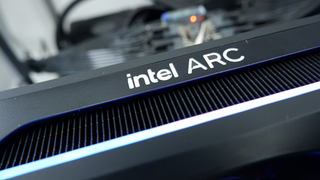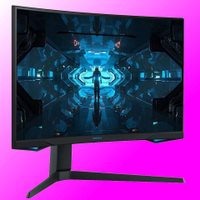Intel Arc graphics gets enthusiast-style overclocking tool
Unofficial homebrew tool cooked up by veteran GPU overclocker.

Asus' renown overclocking expert Peter "Shamino" Tan has cooked up a new tool for Intel's Arc graphics cards, known as the the Arc OC Tool (via Tom's Hardware). This is the first overclocking tool created by a third party that works with Intel's GPUs.
Arc graphics overclocking is already possible courtesy of Intel's own Arc Control app. But that's a relatively limited tool. Meanwhile, popular third party tools, including MSI's Afterburner, as yet have not supported Intel cards.
Although Tan is an Asus employee, the Arc OC Tool is said to work with any Intel Arc graphics cards, regardless of vendor. However, the tool is not an official Intel or even Asus release and comes with an explicit "use at own risk" warning.
Arc OC Tool supports both conventional static overclocking with the GPU locked to a particular frequency and offset overclocking. The latter hooks into the GPU's voltage curve and adjusts the frequency on the fly.
The tool comes with a particular warning regarding manual voltage settings being problematic. Our advice is if in doubt, no touchy or something's liable to pop. Maybe just your Intel GPU, or maybe your whole PC.
Of course, a bit of overclocking is not going to turn an Intel Arc A770 into an Nvidia RTX 4090 killer. But tools like this are another step on Intel Arc's journey towards becoming a truly competitive player in the gaming graphics market. Every little helps, as they say.
Best gaming monitor: Pixel-perfect panels
Best high refresh rate monitor: Screaming quick
Best 4K monitor for gaming: High-res only
Best 4K TV for gaming: Big-screen 4K PC gaming
The biggest gaming news, reviews and hardware deals
Keep up to date with the most important stories and the best deals, as picked by the PC Gamer team.

Jeremy has been writing about technology and PCs since the 90nm Netburst era (Google it!) and enjoys nothing more than a serious dissertation on the finer points of monitor input lag and overshoot followed by a forensic examination of advanced lithography. Or maybe he just likes machines that go “ping!” He also has a thing for tennis and cars.
Most Popular







